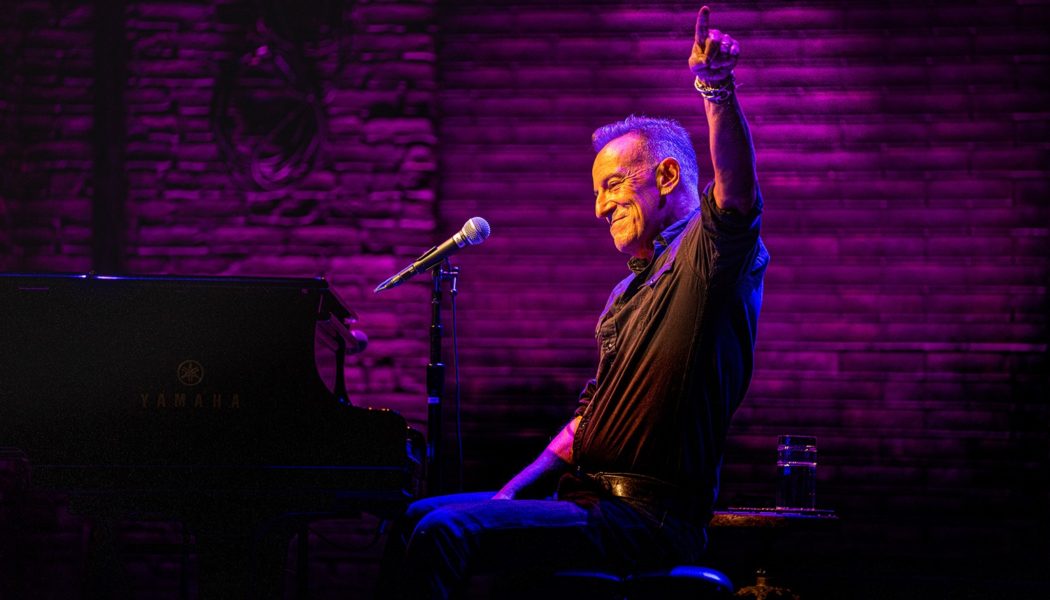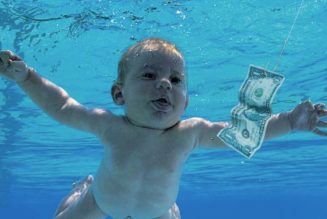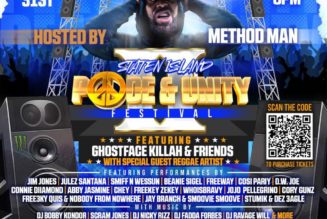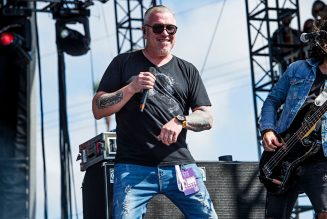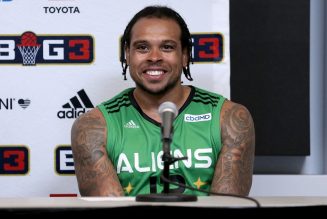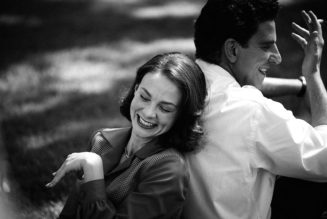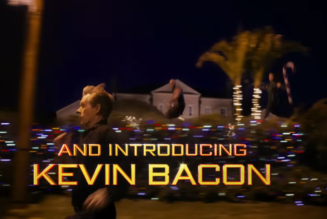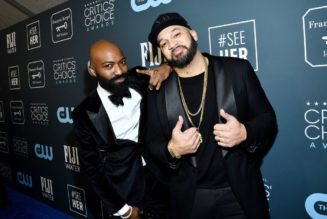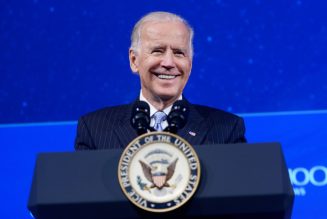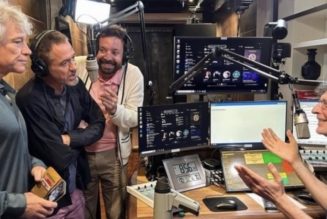
The core of Springsteen’s Broadway show remains the same: Part “Growin’ Up” as Jersey Shore Bildungsroman, part examination of his own rock ‘n’ roll myth, part meditation on mortality. Right at the start, Springsteen talks about coming from a Boardwalk town, “where everything is tinged with just a bit of fraud,” then admits that his knowledge of fast cars and factory work is largely invented. “It has to be believable,” he said last night. “Which is tricky, because I’m lying.” This is reliably hilarious, but also braver than it might seem: At a time when so much pop music seems to rely on identity and experience, Springsteen is claiming the purview of a novelist.
For all that, though, Springsteen’s show is incredibly personal. It’s about growing up surrounded by family, near a church that marked the passage of time with weddings and funerals, playing hide-and-seek with his sister in the nearby graveyard. Hardly the stuff of most rock ‘n’ roll. Then he got this guitar — what his father called “that f—ing guitar” — and joined a band. After a few false starts, the rest was history, and Springsteen takes us through them, and the formation of the E Street Band, playing “Thunder Road,” “The Promised Land” and — with a shout-out to Clarence Clemons — “Tenth Avenue Freeze Out.” With minor changes — a new anecdote here, a new joke there — the first half of the show isn’t much different.
The second half of the show took on a new arc that gave it more power, however. After the usual “Tougher Than the Rest,” Springsteen and his wife, Patti Scialfa, sang “Fire” as a staring-into-each-other’s-eyes duet. Then Springsteen addressed the politics of the past year, when democracy itself seemed to be under threat, and quoted that famous Dr. Martin Luther King line: “The arc of the moral universe is long, but it bends toward justice.” “He neglected to mention,” Springsteen said, “that it does an awful lot of zigging and zagging along the way.” Then he played “American Skin (41 Shots),” written about the 1999 fatal police shooting of Amadou Diallo, but — tragically — just as relevant today more than two decades later.
The rest of the set list wasn’t much different — “The Rising,” then “Dancing in the Dark” and “Land of Hope and Dreams.” Then, as usual, Springsteen told a story about taking a drive to look at the neighborhood where he grew up and finding it less lively than he remembered — the streets quiet, the church empty, the grand tree he remembers climbing and playing under cut down. He assumed, he said, that it would be there long after he was gone. Its imprint remained, though, he said — just like the imprint of his father and friends remains. The spoken part of the show ended with the Lord’s Prayer, as before — although the losses of the past year and the reopening of the world gave it an added gravity. Until now, Springsteen has ended the show with “Born to Run,” a song about escape to conclude a show that begins and ends with a man thinking back on the house he grew up in. It worked.
On Saturday night, though, Springsteen ended the show with “I’ll See You in My Dreams,” a song from Letter to You about that imprint of those who are no longer with us. It worked better. Letter is about looking back, just as parts of the Broadway show are, and the song makes a powerful finale. (It’s hard to know whether the show will remain the same as it was last night, but Springsteen hasn’t made many changes so far.) It’s not as dark as it might sound — “Dreams” is about what stays with you. “The road is long,” Springsteen sings, “and seeming without end.” It’s a good thing, though, that he’s back on it.
